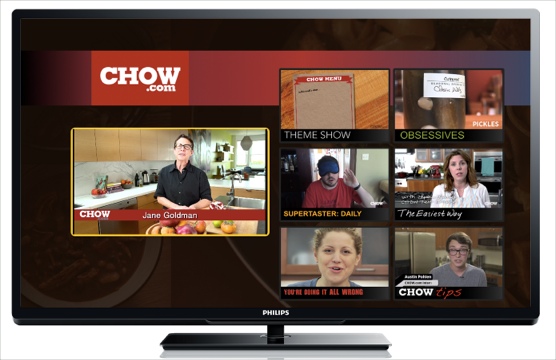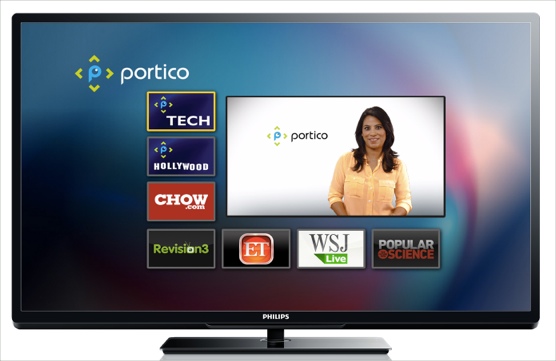-
Cloud-Based Startup Portico Aims to Package Online Video Into TV Experiences
Scan comScore's monthly rankings of top video properties and one of the interesting things you'll notice is that aside from maybe one or two TV networks' sites, those with the heaviest traffic (e.g. YouTube, Yahoo, AOL, VEVO, Facebook, etc.) specialize in short-form content.
What this means is that unlike traditional TV - which features 30 and 60 minute programs (if not longer) - in online video many viewers' experiences consist of cobbling together numerous shorter clips, requiring them to repeatedly make a choice of what to watch next. The reality is that in online video there is little actual "programming" or "scheduling" that happens - where human beings actually create and curate a flow of programs designed to keep the viewer in place for longer (and more monetizable) periods of time.
Recognizing this deficiency - and the proliferation of Internet-connected TVs - a new service launching today called Portico, from startup Net2TV, aims to package, or cluster by genre as "mosaics," certain online videos, to create a more TV-like experience for viewers. Portico's service, which is available initially on Philips SmartTVs in the U.S. presents mosaics featuring either a specific content provider, or multiple providers. In the former example, CBS Interactive's CHOW.com has its own mosaic, whereas the "Portico Tech" mosaic includes content from Discovery's Revision 3 and Bonnier's Popular Science.These mosaics are not just playlists of short-form video algorithmically stitched together. Rather, as with TV, Portico's key value proposition is an editorial team that works with its content partners to assemble logical 30-60 minute programming blocks. In addition, each mosaic has a host who introduces the content and explains what's new. All of the programming is free and ad-supported initially, with revenue shared between Portico and the content providers.
Another interesting aspect of Portico's service is that it is cloud-based and deployed via a thin client in connected TVs using technology from ActiveVideo Networks. As Tom Morgan, Net2TV's CEO, explained to me, by using this approach, Portico can scale quickly across multiple connected TVs and also iterate the user experience. That contrasts with the typical process content providers encounter when trying to deploy apps in connected devices, each of which has their own proprietary development environments and lengthy QA/approval cycles. Because it's cloud-based, Portico can also dynamically update content and ads.
Importantly, more scale also makes Portico's content more readily monetizable. As difficult as it is for content providers to deploy apps, it's also painful for advertisers to insert video ads in connected TV apps.
Tom sees Portico fitting in both as an augment for pay-TV subscribers seeking deep affinity content (e.g. more tech or cooking programming and so forth) or for non-pay-TV subscribers looking for easy access to quality online video content in TV-style experiences. For content providers that have mainly lived on short-form viewing and monetization, Portico provides a new, alternative distribution model that packages their video for the TV viewing paradigm. As connected TVs continue to grow in popularity, Portico gives these content providers a level playing field in the living room to compete with channels on pay-TV.
Portico strikes me as a very intriguing concept, operating at the intersection of online video and TV. It recognizes that there's currently a disconnect between how online video is presented vs. TV viewers' traditional expectations. Incidentally, this is the same problem that YouTube is addressing with its own "Channels" initiative of original programming.
Going in Portico's favor is that Tom is a veteran industry executive who has brought together a strong team with experience in both TV and technology. For now Portico is rolling out slowly without much fanfare and promotion. The immediate goal is to learn from a small set of users and iterate the experience. I like that approach and am eager to see how Portico progresses.

Categories: Aggregators, Devices
Topics: ActiveVideo Networks, Net2TV, Portico


